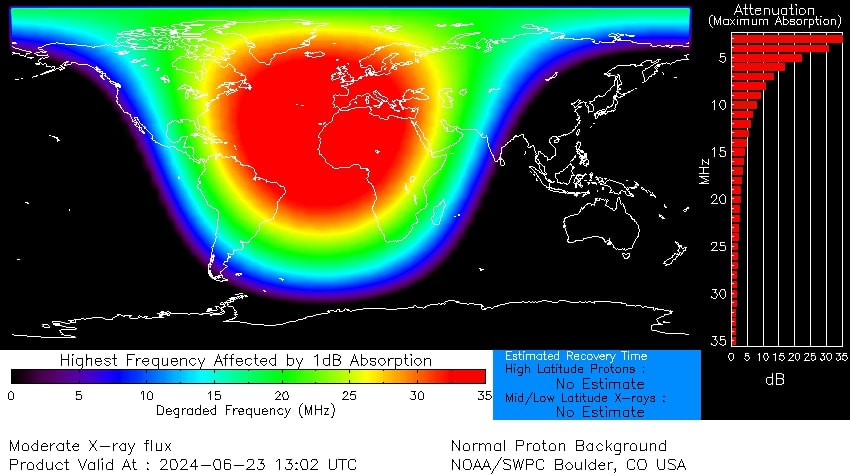It's back! Aurora-sparking sunspot returns for rare 3rd trip across the sun, firing off explosive solar flare (video)
The renamed sunspot region AR3723 will soon face Earth once more.
The historic sunspot region that sparked the record-breaking auroras of May 2024 has returned.
AR3723 is the returning version of sunspot AR3697 and before that AR3664 — which was responsible for the colossal G5 geomagnetic storm that triggered epic auroras around the world. The emerging region will likely receive multiple designations due to its fragmentation, according to space weather physicist Tamitha Skov's post on X.
The sun's rotation period averages 27 days, which means Earth can view a given active region for around two weeks before it rotates over the sun's western edge. Newly emerging active regions rotating onto the sun's eastern edge are given a new active region number due to the historical inability to track an active region around the back of the sun.
The sunspot region is making a rare third trip across the Earthside of the sun, but what can we expect from this hyperactive region?
Related: The sun's magnetic field is about to flip. Here's what to expect.
Though the sunspot region has fragmented and is only a fraction of its former size its magnetic makeup continues to produce powerful solar flares.
A few days ago on June 23, the region unleashed a powerful M9.3-class solar flare, peaking at 9:01 a.m. EDT (1301 GMT) according to Spaceweatherlive.com. The eruption was just points away from being classified as an X-flare, the most powerful class of solar flare.
Get the Space.com Newsletter
Breaking space news, the latest updates on rocket launches, skywatching events and more!
The solar flare triggered moderate shortwave radio blackouts across Western Europe and Africa. Such radio blackouts are common after powerful solar flare eruptions due to the strong pulses of X-rays and extreme ultraviolet radiation emitted during these events. The radiation travels toward Earth at the speed of light and ionizes (gives an electrical charge to) the top of Earth's atmosphere when it reaches us.

This ionization creates a higher-traffic environment for high-frequency shortwave radio signals to navigate through in order to support communication over long distances. Radio waves that interact with electrons in the ionized layers lose energy due to more frequent collisions, and this can lead to radio signals becoming degraded or completely absorbed.
Scientists will be keeping a watchful eye on this region as it produced 28 M-class flares and 6 X-class flares during its last rotation as AR3697. Aurora chasers will be hoping for some strong solar activity in the coming days as the sunspot region turns to face Earth.
Editor's note: This story was updated on June 27 to reflect that the returning sunspot region will likely receive multiple designations due to its fragmentation.
Join our Space Forums to keep talking space on the latest missions, night sky and more! And if you have a news tip, correction or comment, let us know at: community@space.com.

Daisy Dobrijevic joined Space.com in February 2022 having previously worked for our sister publication All About Space magazine as a staff writer. Before joining us, Daisy completed an editorial internship with the BBC Sky at Night Magazine and worked at the National Space Centre in Leicester, U.K., where she enjoyed communicating space science to the public. In 2021, Daisy completed a PhD in plant physiology and also holds a Master's in Environmental Science, she is currently based in Nottingham, U.K. Daisy is passionate about all things space, with a penchant for solar activity and space weather. She has a strong interest in astrotourism and loves nothing more than a good northern lights chase!
-
ng218 The RSS feed for this story put in a massive block of the story's text into the "Author" heading rather than the author's name...Reply









